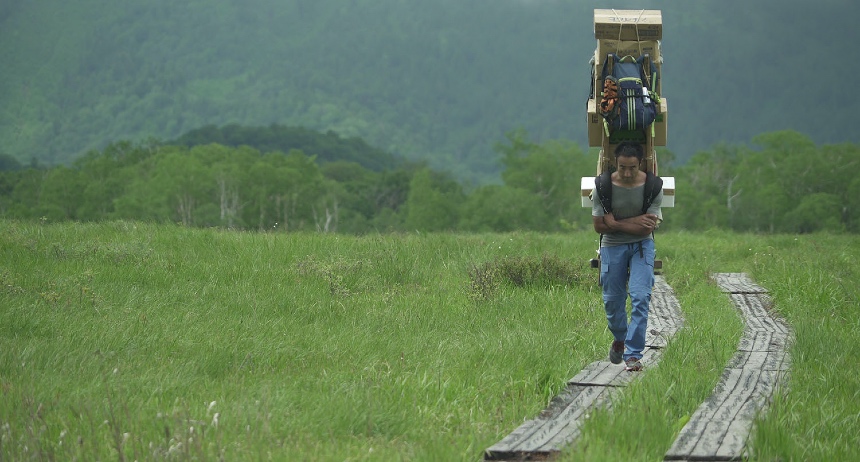Busan 2020 Review: SPEED OF HAPPINESS Delivers Soothing Snapshot of a Unique Profession

Documentary filmmaker Park Hyuck-jee, known for the charming documentary With or Without You, is back with his latest non-fiction work, his first to be invited to Busan. Set in the mountainous Oze region of Central Japan, the pleasurable and satisfying Speed of Happiness explores an unusual profession and the hardy folks who make their living from it.
High up in the beautiful Oze wetland lies a group of popular mountain lodges which are only open from May to October. The catch, though, is that there are no roads leading there and they can only be reached on foot, up a mountain and then along thin, long wooden planks that slalom through the wetland. That goes for travellers making their way there, but it also applies to any supplies that the lodges need to keep their operations going. All deliveries made in and out of the area are done by 'bokkas', men who trudge up and down the hill with towers of heavy boxes hoisted on their backs.
The work is difficult, with loads weighing as much as 80 to 100 kilograms, and employment is seasonal, as the area is closed off when winter begins to approach. Yet gruelling as this may sound, Speed of Happiness introduces us to a profession that is hardy, proud, and, as seen from the comforts of our seats at least, satisfying and somewhat soothing. It's honest work which is appreciated by those who retain their services and marvelled at by the tourists they cross on their trails. As we see early on, the men who perform the work (the documentary specifically focuses on two) have homes and happy families. Difficult as the work may be, they seem to earn a decent living from it.
This image may even be familiar to some gamers, as bokkas serve as an inspiration for the occupation of the main character in the recent game 'Death Stranding', designed by celebrated 'Metal Gear Solid' mastermind Hideo Kojima.
Bokkas carefully tie their loads onto a custom harness and then begin their slow marches to their destinations. To keep their balance and distribute weight evenly, they either cross their arms with fists snuggly wedged in their armpits or their hands will be clasped into a tight ball on their stomachs.
Much of the film features Director Park following these bokkas on their trail, his camera gliding behind these towers of boxes that gently march through the scenery into the horizon. His camera drinks in the flora on these steady trails and catches interesting imagery along the way - such as when the camera climbs up a bokka's load, gliding past the tower of packages, and up until stopping at the spare sneakers perched on the ends of the rig's wooden poles, with the lodges appearing in the distance behind them.
Director Park shines a light on a winning subject that proves fascinating to explore and earns its title. Yet it must said that this deliberately soft focus -- which seems to place it in the realm of the 'healing film', a recent Korean film genre that also include Little Forest -- perhaps conveniently avoids some of the harsher aspects of the job and these characters' lives that surely exist. After piquing our curiosity, Park's laconic style also avoids offering a lot of hard information and several basic questions seem to be left unanswered. How long are these treks? How many can the bokkas complete in a day?
Alas, as fall arrives and work in the area starts to wind down, so too does the film. The men take on different activities in the winter season in different parts of the country, but if the director intends to share a message as the film drifts off in these closing passages, he seems to have left it behind in the Oze wetlands with the memory of the summer treks of the bokkas. Still, those calming, rustic memories make Speed of Happiness more than worth the trip.







